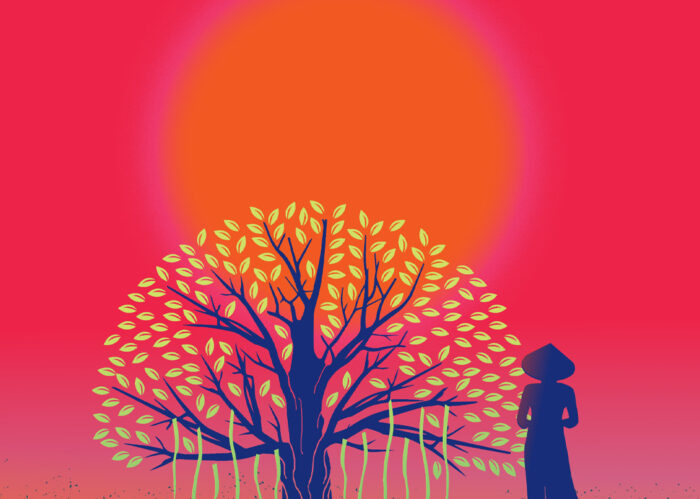Seven Reasons for a New Nature Movement, from Richard Louv
Richard Louv, bestselling author of Last Child in the Woods, writes about re-imagining the future of our planet in this essay adapted from his new book, The Nature Principle. Read Richard Louv’s “Seven Reasons for a New Nature Movement” below, originally published on his blog.
 Martin Luther King Jr. taught us, by word and example, that any movement — any culture —will fail if it cannot paint a picture of a world that people will want to go to. As others have said, his speech was not called “I Have a Nightmare.”
Martin Luther King Jr. taught us, by word and example, that any movement — any culture —will fail if it cannot paint a picture of a world that people will want to go to. As others have said, his speech was not called “I Have a Nightmare.”
For decades, our culture has struggled with two addictions, to oil and to despair. It’s pretty clear by now that we can’t kick one of those habits without kicking the other. Yet, for many Americans, perhaps most of us, thinking about the future conjures up images of “Blade Runner,” “Mad Max” or Cormac McCarthy’s “The Road”: a post-apocalyptic dystopia stripped of nature. We seem drawn to that flame.
It’s a dangerous fixation. Think how children and young people must feel today, growing up in a time when so many adults seem to accept, with a shrug, only darkness ahead. The key question here is: How do we change our vision of the future? Where do we start? Here’s one suggestion: reconceive environmentalism and sustainability – help them evolve into a larger movement that can touch every part of society.
Here are seven reasons for a New Nature Movement.
• The more high-tech we become, the more nature we need. Even as biodiversity and traditional connections to nature fade, an almost religious faith in technology suggests that, well, we don’t need nature much anymore. We hear talk of a “post-biological” era in which human beings are optimally enhanced by technology. Yet, we’ve only begun to study how the natural world can optimize human health and intelligence. Technology will always be with us, but as it grows, we’ll need an antidote to its downside.
• As of 2008, more than half of the world’s population now lives in towns and cities. If human beings are to enjoy nature, they’ll likely have to do it in urban areas. This transformation will produce one of two outcomes: either the end of meaningful daily experience in nature, or the beginning of a new kind of city – and a new view of our role in and our definition of nature.
• Adults have nature-deficit disorder, too. In recent years, the children and nature movement has revealed a vein of hope. That effort has brought people together across party lines and religious and economic divisions. But the children and nature movement will not succeed unless adults come to see the importance of our own connection to the natural world.
• Environmentalism needs to hit reset. The environmental movement’s many successes did not prepare us for even larger global challenges, including climate change and the human disconnection from the natural world. Poll after poll now shows that environmental concern, in some areas, has dropped to its lowest point since before Earth Day 1970. Why? Economic recession. A well-financed campaign of disinformation. An inability to describe a great future. For whatever reason, environmentalism remains a pup tent. We need a bigger tent. In fact, we need a river.
• Sustainability alone is not sustainable. Though we don’t have a better word to replace it, the word sustain suggests stasis. Fairly or not, much of the public views energy conservation and the development of alternative energy sources as essential but ultimately technical goals. We need more than stasis; we need to produce human energy (health, intelligence, creativity, joy) through nature.
• Conservation is not enough. Now we need to “create” nature. Even if we conserve every square foot of remaining wilderness, and we should, it won’t be enough to guarantee the biodiverse habitats that humans and other organisms will require to thrive. In addition to conservation, we must now restore or create natural habitats on our farms and ranches, in our cities, neighborhoods, commercial buildings, yards, and on our roofs. We’ll need the true greening of America and the rest of the world.
• We have a choice. If we see only an apocalyptic future, that’s what we’ll get, or close to it. But imagine a society in which our lives become as immersed in nature as they are in technology, every day, where we live, work, learn and play. Imagine a future in which our intelligence and creativity, our ability to feel and be fully alive is enhanced by more frequent contact with the natural world.
We’re already seeing a convergence of a New Nature Movement focused on human restoration through the natural world. A new river is gathering force. At its headwaters, an expanding body of scientific evidence links the human experience in the natural world to better physical health and enhanced cognitive abilities.
Now comes a cascade of hope: biophilic design of new homes, workplaces, neighborhoods, cities; reconciliation ecology and human-nature social capital; restorative homes and businesses; ecopsychology and other forms of nature therapy; pediatricians who prescribe nature; citizen naturalists; nature-based schools; the Slow Food and simplicity movements; organic gardening; urban agriculture, vanguard ranching and other forms of the new agrarianism; the children and nature movement; and more.
As these currents join, they’ll lead us to a different view of the future. It won’t look perfect, but it’ll surely be better.
In fact, precisely because of the environmental challenges we face, the future will belong to the nature-smart — those individuals, families, businesses and political and social leaders who develop a deeper understanding of the transformative power of the natural world, and who balance the virtual with the real. That’s a picture worth painting, a future worth creating.
But first, we have to imagine it.
— Richard Louv
This essay is adapted from THE NATURE PRINCIPLE: Human Restoration and the End of Nature-Deficit Disorder (Algonquin Books, 2011). Richard Louv is also the author of LAST CHILD IN THE WOODS: Saving Our Children from Nature-Deficit Disorder. He is Chairman Emeritus of The Children and Nature Network, where the essay also appears.
And be sure to check out Richard Louv’s website to read an excerpt from the new book, watch the video trailer and learn more.
-
Overall Score
Reader Rating: 0 Votes



